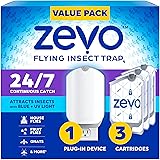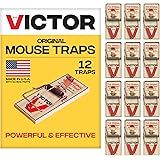Once upon a time, in a land of fertile soil and abundant sunshine, there lived two vegetable friends named Tom the Tomato and Curly the Cucumber. They knew that their love for each other could only grow stronger if they could coexist in the same greenhouse.
And so, they set out to prove that growing tomatoes and cucumbers together in a greenhouse was not only possible but also beneficial for both of them.
The Advantages of Tom and Curly’s Friendship
Growing tomatoes and cucumbers together in a greenhouse offers several advantages. Firstly, it’s a great way to maximize space. In a greenhouse, you can use vertical gardening techniques such as trellises, cages, or stakes, to grow tomatoes and cucumbers in a limited area. This allows the plants to grow upward, leaving more ground space for other plants.
Secondly, tomatoes and cucumbers share similar growing conditions. Both plants thrive in warm temperatures, ample sunlight, and well-drained soil. By providing these conditions in a greenhouse, you can ensure a bountiful harvest of both veggies. Additionally, growing these two plants together allows for easier pest control. Tomatoes can help repel cucumber beetles, while cucumbers can help deter tomato hornworms.
Read More: About How To Get Rid OF Aphids On Sweet Peas
The Tale of Planting and Growing
Before Tom the Tomato and Curly the Cucumber could grow together, they needed the right environment. Here’s how to create the perfect greenhouse conditions for these two plants:
- Soil preparation
Start by preparing a well-draining soil mix. Both tomatoes and cucumbers prefer a slightly acidic soil with a pH between 6.0 and 6.8. You can use a mixture of equal parts peat moss, vermiculite, and compost to create the perfect soil for these plants.
- Planting
Plant the tomato and cucumber seeds in separate pots or trays. Transplant them to the greenhouse once they have grown a few inches tall. Space the plants about 18-24 inches apart, giving them enough room to grow without crowding each other.
- Watering
Both tomatoes and cucumbers need consistent moisture, but avoid overwatering, as it can lead to root rot. Use a drip irrigation system or water the base of the plants, keeping the foliage dry to prevent diseases.
- Support
Use cages, stakes, or trellises to provide support to both the tomato and cucumber plants. This will help the plants grow vertically, leaving more space for other plants in the greenhouse.
- Pollination
Since cucumbers are pollinated by bees, and tomatoes can be pollinated by wind, you might need to assist with hand pollination. Use a small paintbrush or cotton swab to transfer pollen from the male flowers of cucumbers to the female flowers.
A Happy Harvest
With the right care and attention, Tom the Tomato and Curly the Cucumber flourished in their greenhouse home. When it was time to harvest, the plants produced an abundance of delicious, juicy tomatoes and crisp, refreshing cucumbers.
The Chronicles of Pest Control and Disease Prevention
Tom the Tomato and Curly the Cucumber’s journey to coexistence was not without its challenges. The duo faced numerous pests and diseases that threatened to disrupt their harmonious greenhouse life. However, with the proper prevention and control measures, their caretakers managed to protect them from harm.
Pest Control Strategies
To keep pests at bay, consider the following strategies:
- Introduce beneficial insects
Ladybugs, lacewings, and predatory mites are natural predators of common greenhouse pests such as aphids and spider mites. Introducing these beneficial insects can help keep pest populations under control.
- Practice crop rotation
Rotating crops can break the life cycle of pests and diseases that target specific plants, reducing their impact on your greenhouse garden.
- Use organic pest control methods
Neem oil, insecticidal soap, and diatomaceous earth are eco-friendly options for controlling pests without harming the plants or the environment.
Disease Prevention Techniques
To protect Tom the Tomato and Curly the Cucumber from diseases, follow these preventative measures:
- Ensure proper ventilation
Good air circulation is essential for reducing humidity and preventing the growth of mold and mildew. Ensure your greenhouse has adequate ventilation to keep the air fresh and dry.
- Practice proper hygiene
Keep your greenhouse clean and free of debris, as it can harbor pests and diseases. Disinfect your tools, pots, and trays regularly to prevent the spread of diseases between plants.
- Monitor plant health
Regularly inspect your plants for signs of disease, such as yellowing leaves, wilting, or unusual growth patterns. Early detection and treatment can save your plants from severe damage.
Read More: About 3 Week Old Tomato Seedlings
The Art of Companion Planting
Aside from the successful pairing of tomatoes and cucumbers, the greenhouse garden saga of Tom and Curly also highlights the importance of companion planting. By selecting plants that benefit each other, you can create a vibrant, diverse garden that thrives in harmony.
Some popular companion plants include:
- Marigolds
These cheerful flowers can deter pests like nematodes and whiteflies, making them a great companion for tomatoes and cucumbers.
- Basil
Basil repels tomato hornworms and enhances the flavor of tomatoes, making it an ideal companion for your tomato plants.
- Radishes
Planting radishes near cucumbers can help deter cucumber beetles and other pests.
In conclusion, the greenhouse garden saga of Tom the Tomato and Curly the Cucumber demonstrates that with careful planning, a touch of creativity, and a deep understanding of plant needs, you can create a thriving, diverse garden that brings forth an abundant harvest. Remember their story as you embark on your own gardening adventures, and let their friendship guide you toward a fruitful and harmonious garden.
FAQs: The Curious Case of Tomatoes and Cucumbers
Avoid planting tomatoes near vegetables such as potatoes, corn, and Brassicas like cabbage, cauliflower, and broccoli, as they can attract pests that may harm the tomato plants.
Avoid planting cucumbers near aromatic herbs like sage and strong-scented vegetables like onions and garlic, as they can stunt the growth of cucumbers.
Yes, you can grow tomatoes, cucumbers, and peppers together in a greenhouse. Peppers share similar growing conditions with tomatoes and cucumbers, making them compatible greenhouse companions. Additionally, these three plants can benefit each other by repelling certain pests.
Cucumbers and tomatoes have similar nutrient requirements, so a balanced fertilizer with equal parts nitrogen, phosphorus, and potassium (N-P-K) is suitable for both plants.
However, cucumbers may require slightly more nitrogen than tomatoes, so make sure to monitor their growth and adjust the fertilizer application accordingly.
While there are some concerns about planting cucumbers near tomatoes, mainly due to the potential for disease transmission, growing them together in a greenhouse under controlled conditions can help minimize these risks.
By maintaining proper hygiene and monitoring plant health, you can grow these two plants together successfully.
Basil, carrots, lettuce, and onions are excellent companion plants for tomatoes. They can help repel pests, improve soil nutrients, and enhance the flavor of tomatoes. Other good companions for tomatoes include beans, peas, marigolds, and nasturtiums.
Wrapping Things Up
In the end, Tom the Tomato and Curly the Cucumber proved that with proper care, attention, and a little help from their human caretakers, they could grow together in harmony within a greenhouse. Their beautiful friendship not only brought forth an abundant harvest but also reminded us of the importance of understanding and respecting the unique needs of each plant species.
So, if you’re inspired to embark on your own greenhouse garden saga, remember the lessons learned from Tom and Curly. With the right conditions, a touch of creativity, and a bit of love, you too can create a thriving, fruitful garden where tomatoes and cucumbers can grow together as the best of friends.
Auto Amazon Links: No products found.
Wilt-Pruf® Christmas Tree/Cutting Preserver Spray |Preserves Christmas Trees, Wreaths, Garlands, Cuttings and Carved Pumpkins | Reduces Needle Drop | Keeps Cut Trees Fresh Longer | Natural (32 oz)
$21.99 (as of November 17, 2025 21:54 GMT +00:00 - More info- Product prices and availability are accurate as of the date/time indicated and are subject to change. Any price and availability information displayed on [relevant Amazon Site(s), as applicable] at the time of purchase will apply to the purchase of this product.
Perfect Plants Christmas Tree Saver 8oz. | Easy Use Xmas Tree Preserver Food | Have Healthy Green Christmas Trees All Holiday Season
$13.99 (as of November 17, 2025 21:54 GMT +00:00 - More info- Product prices and availability are accurate as of the date/time indicated and are subject to change. Any price and availability information displayed on [relevant Amazon Site(s), as applicable] at the time of purchase will apply to the purchase of this product.
HoHoHoH2o Automatic Christmas Tree Watering System Device, Santa’s Tree Helper Keeps Your Christmas Tree Healthy and Fresh, Refillable 2.5 gallons Capacity Box - Silver/Festive
$99.95 (as of November 17, 2025 21:54 GMT +00:00 - More info- Product prices and availability are accurate as of the date/time indicated and are subject to change. Any price and availability information displayed on [relevant Amazon Site(s), as applicable] at the time of purchase will apply to the purchase of this product.
Christmas Tree Watering Funnel with Hose 3'' Wide 23'' Long – Transmission Long Funnel Narrow Tip – Flexible, Reusable and Durable with Elastic Hose, No Leak Design for Oil, Gas, Coolant and Water
$6.99 (as of November 17, 2025 21:54 GMT +00:00 - More info- Product prices and availability are accurate as of the date/time indicated and are subject to change. Any price and availability information displayed on [relevant Amazon Site(s), as applicable] at the time of purchase will apply to the purchase of this product.
Christmas Tree Watering Funnel-Watertight Christmas Tree Funnel,Long Christmas Tree Watering System,Christmas Tree Waterer Xmas Plant Watering Tool for Real Live Tall Chirstmas Trees
$18.99 (as of November 17, 2025 21:54 GMT +00:00 - More info- Product prices and availability are accurate as of the date/time indicated and are subject to change. Any price and availability information displayed on [relevant Amazon Site(s), as applicable] at the time of purchase will apply to the purchase of this product.
Zevo Flying Insect Trap Official Refill Cartridges - Fits Both Zevo Trap & MAX Indoor Fly Trap - Authentic Trap+Lock Technology to Catch Gnats, House & Fruit Flys (4 Official Refill Cartridges)
$14.97 (as of November 19, 2025 10:06 GMT +00:00 - More info- Product prices and availability are accurate as of the date/time indicated and are subject to change. Any price and availability information displayed on [relevant Amazon Site(s), as applicable] at the time of purchase will apply to the purchase of this product.
Zevo Flying Insect Trap & 3 Refill Cartridges - Plug in Fly Trap & Indoor Bug Catcher for Gnats, House & Fruit Flies - Blue & UV Light Technology, Mess-Free Alternative to Bug Zapper
$25.96 (as of November 19, 2025 10:06 GMT +00:00 - More info- Product prices and availability are accurate as of the date/time indicated and are subject to change. Any price and availability information displayed on [relevant Amazon Site(s), as applicable] at the time of purchase will apply to the purchase of this product.
TERRO Ant Killer Bait Stations T300B - Liquid Bait to Eliminate Ants - Bait System - 12 Count Stations for Effective Indoor Ant Control
$10.88 (as of November 19, 2025 10:06 GMT +00:00 - More info- Product prices and availability are accurate as of the date/time indicated and are subject to change. Any price and availability information displayed on [relevant Amazon Site(s), as applicable] at the time of purchase will apply to the purchase of this product.
TERRO Fruit Fly Traps for Indoors (4 Pack) + 180 Days of Lure Supply
$10.95 (as of November 19, 2025 10:06 GMT +00:00 - More info- Product prices and availability are accurate as of the date/time indicated and are subject to change. Any price and availability information displayed on [relevant Amazon Site(s), as applicable] at the time of purchase will apply to the purchase of this product.
Victor Mouse Traps M150-12, Metal Pedal, Sustainably Sourced FSC Wood, Wooden Mouse Traps, 12 Metal Pedal Traps
$9.79 (as of November 19, 2025 10:06 GMT +00:00 - More info- Product prices and availability are accurate as of the date/time indicated and are subject to change. Any price and availability information displayed on [relevant Amazon Site(s), as applicable] at the time of purchase will apply to the purchase of this product.














